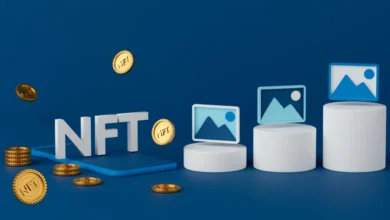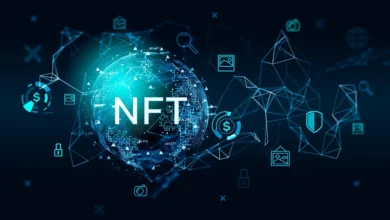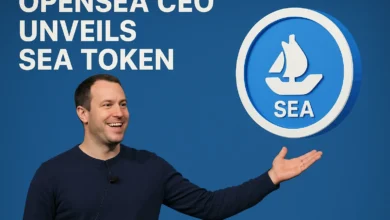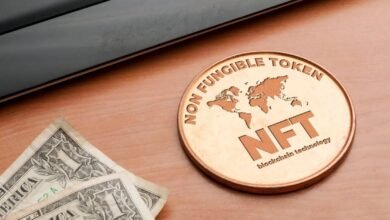
Non-fungible tokens are staging a significant comeback after the brutal crypto winter of 2022-2023. A closer examination reveals a troubling reality: the once-dominant blue-chip projects that defined the NFT boom are barely clinging to relevance. This divergence between general market recovery and the decline of established collections represents one of the most fascinating developments in blockchain technology and digital ownership.
The NFT market that emerged from the depths of the bear market looks fundamentally different from the speculative frenzy of 2021. New projects are launching with more sustainable utility models, gaming integrations are becoming increasingly sophisticated, and institutional adoption is quietly accelerating. However, the prestigious collections that once commanded multi-million dollar floor prices—the CryptoPunks, Bored Apes, and their contemporaries—are experiencing sustained downward pressure that threatens their long-term viability. Understanding this phenomenon requires examining the structural changes reshaping the digital art marketplace, the evolution of collector behavior, and the harsh lessons learned from the previous cycle’s excesses.
The NFT Market Renaissance: Signs of Life Returning
Trading Volume Metrics Tell a Recovery Story
Recent data from blockchain analytics platforms indicates that NFT trading activity has rebounded substantially from the lows experienced throughout 2023. Monthly trading volumes across major marketplaces like OpenSea, Blur, and Magic Eden have shown consistent upward trajectories, with certain months in 2024 and early 2025 approaching half of the peak volumes witnessed during the 2021 euphoria. This resurgence isn’t driven by mindless speculation but rather by more diversified use cases that extend beyond profile pictures and static artwork.
The cryptocurrency collectibles sector has matured considerably, with traders demonstrating a more sophisticated understanding of tokenomics, utility integration, and long-term value propositions. Gaming NFTs have emerged as a particularly robust category, with play-to-earn mechanics evolving into more sustainable play-and-earn models that prioritize entertainment value alongside economic incentives. Virtual real estate in metaverse platforms continues attracting investment from both retail participants and corporate entities seeking to establish a digital presence.
New Projects Dominate Market Attention
Perhaps the most telling indicator of the market’s transformation is where attention and capital are flowing. Fresh launches with innovative mechanics are consistently outperforming legacy collections in terms of mint velocity, secondary trading volume, and community engagement. Projects incorporating artificial intelligence, dynamic metadata that changes based on on-chain events, and cross-chain interoperability are capturing the imagination of collectors who’ve grown weary of static JPEG collections.
The blockchain assets ecosystem has expanded to encompass music NFTs, tokenized real-world assets, membership passes for exclusive communities, and digital identity solutions. This diversification has broadened the addressable market beyond the relatively narrow demographic of crypto-native speculators who dominated the previous cycle. Mainstream brands are re-entering the space with more measured approaches, having learned from earlier missteps, and their involvement is lending legitimacy to the broader NFT narrative.
The Blue Chip Crisis: Icons on the Decline
Blue Chip NFT Collections
The term “blue chip” in traditional finance refers to established companies with histories of reliable performance and stable valuations. In the NFT context, it came to describe collections like CryptoPunks, Bored Ape Yacht Club, Azuki, CloneX, and similar projects that achieved sustained floor prices in the tens or hundreds of thousands of dollars while building strong brand recognition and cultural cachet. These collections were considered safe havens—the closest thing to reliable investments in an otherwise volatile and speculative market.
However, the very characteristics that defined these premium NFT projects during the boom have become liabilities in the evolving landscape. Their astronomical price points created insurmountable barriers to entry for new collectors, their roadmaps often failed to deliver promised utility, and their communities struggled to maintain engagement as prices declined. The cultural relevance that once made owning these tokens desirable status symbols has diminished as the broader public’s attention shifted away from crypto during the bear market.
Floor Price Erosion and Volume Collapse
The financial reality facing blue-chip collections is stark and unrelenting. Collections that maintained floor prices above 50 ETH during peak mania now struggle to hold levels above 10-15 ETH, representing declines of 70-80% or more from all-time highs. More concerning than the absolute price decline is the complete evaporation of trading volume—many days pass without a single transaction occurring in collections that once saw dozens of sales hourly. This liquidity crisis means that even holders willing to accept significant losses often cannot find buyers at any reasonable price.
The psychological impact on long-term holders cannot be overstated. Many purchased these digital collectible investments near peak valuations, believing they were acquiring generational wealth vehicles that would appreciate indefinitely. The reality of watching six-figure purchases become worth a fraction of their acquisition cost while still being unable to exit positions has created a demoralized holder base that oscillates between desperate optimism and resigned acceptance. Community Discord servers that once buzzed with constant activity now feel like ghost towns populated by bitter bag holders.
Why Blue Chips Are Struggling While the Market Recovers
Structural Overvaluation and Market Correction
The fundamental problem facing legacy blue-chip projects is that their valuations during the boom period bore no relationship to sustainable economic reality. Prices were driven purely by speculation, greater fool theory, and the belief that mainstream adoption would create infinite demand at ever-higher prices. When the music stopped and new buyers disappeared, the lack of intrinsic value or utility became impossible to ignore.
Contemporary NFT projects launching in the recovery phase have learned from these mistakes. They’re pricing initial mints more conservatively, building actual utility before token launch rather than promising vague future developments, and creating sustainable economic models that don’t rely on perpetual price appreciation. This measured approach makes new projects more attractive to capital than legacy collections still trading at multiples of what rational valuation would suggest.
The Utility Promise That Never Materialized
Perhaps no single factor has contributed more to blue chip than the failure to deliver meaningful utility. During the boom, projects routinely promised exclusive events, merchandise, metaverse integration, governance rights, intellectual property licensing, and various other benefits that would justify premium prices. The vast majority of these promises either never materialized, were delayed indefinitely, or proved disappointingly underwhelming when finally delivered.
The NFT community engagement that initially seemed so vibrant was revealed to be largely superficial—based on shared financial interest in number-going-up rather than genuine connection to the projects’ artistic vision or community values. As prices declined and promised utility failed to appear, these communities fragmented, with engaged members departing for newer projects with active development and clearer value propositions. The remaining holders found themselves stuck with expensive tokens whose primary utility was serving as reminders of past poor investment decisions.
Competition from Superior Alternatives
The NFT ecosystem has evolved dramatically since the blue chips achieved their dominance. New collections offer dynamic artwork that evolves based on holder actions, integrated gaming experiences, real-world benefits through partnerships with established brands, and token-gating for exclusive content and experiences. These innovations make static profile picture collections feel antiquated and one-dimensional by comparison.
Moreover, the digital ownership platforms themselves have improved significantly. Layer-2 scaling solutions have reduced transaction costs to near-zero, multi-chain compatibility has expanded the addressable collector base, and improved user interfaces have made NFT trading accessible to less technically sophisticated participants. Blue-chip collections built on Ethereum layer-1 with expensive transaction costs and limited interoperability struggle to compete in this evolved environment.
The Path Forward: Can Blue Chips Survive?
Adaptation Strategies and Reinvention
Some blue-chip projects are attempting to evolve beyond their origins as simple profile picture collections. These efforts include developing proprietary metaverse platforms, launching companion collections with enhanced utility, securing intellectual property deals that allow holders to commercialize their tokens, and building gaming experiences around their established brands. The success of these initiatives varies widely, with most falling short of generating sufficient value to justify current floor prices, let alone recovery to previous peaks.
The fundamental challenge these projects face is that adaptation requires resources, and declining prices have severely constrained their financial capacity. Teams that raised funds through initial mints or treasury reserves have seen those holdings depreciate alongside the broader crypto market. Ongoing development requires continued funding, which must come from either secondary sales royalties (which have largely disappeared as trading volume collapsed) or additional fundraising at unfavorable valuations.
The Reality of Sunk Cost and Moving On
For many holders and observers, the uncomfortable truth is that most blue-chip projects may never recover to their former glory. The market has moved on, newer projects offer superior value propositions, and the cultural moment that made these collections relevant has passed. Accepting this reality requires confronting the sunk cost fallacy—the tendency to continue investing resources in failing endeavors because of past investments rather than making rational, forward-looking decisions.
The blockchain collectibles market of the future will likely include some legacy collections that successfully reinvented themselves and found sustainable value propositions, but many more will fade into historical footnotes—expensive reminders of speculation gone awry. For the NFT ecosystem to achieve its potential as infrastructure for digital ownership, culture, and commerce, moving beyond the profile picture paradigm represents a necessary evolution rather than an abandonment of founding principles.
Conclusion
The apparent contradiction between overall NFT market recovery and blue chip collection decline resolves when we recognize that we’re witnessing not a return to previous conditions but rather an evolution to something fundamentally different. The resurgence of trading activity, new project launches, and renewed mainstream interest demonstrate that the core concept of digital ownership through blockchain technology remains compelling and valuable. However, the specific implementations that dominated the first wave—static profile pictures trading at absurd multiples based purely on speculation—are being displaced by more sophisticated and utility-focused approaches.
Blue chip projects face an existential challenge as they attempt to remain relevant in a market that has learned harsh lessons about valuation, utility, and sustainability. While some may successfully adapt and find new purpose, many will likely continue their slow decline into irrelevance, serving as expensive cautionary tales about the dangers of speculation divorced from fundamental value. The broader NFT ecosystem, meanwhile, continues maturing into infrastructure that may ultimately fulfill the transformative potential that attracted so much attention and capital in the first place. The distinction between market recovery and individual project failure illustrates that in rapidly evolving technological spaces, past dominance guarantees nothing about future success.
FAQs
Q1: Should I buy blue chip NFTs now that they’re cheaper than their all-time highs?
Purchasing blue-chip NFTs at current depressed prices is a high-risk speculation on whether these specific projects can recapture relevance in an evolved market. While some legacy collections may recover if they successfully reinvent themselves with genuine utility, many will likely continue declining as attention and capital flow to newer projects with superior value propositions.
Q2: What makes new NFT projects more successful than established blue chips?
Contemporary NFT projects are launching with significant advantages learned from previous cycles’ failures. They typically feature lower initial mint prices that attract broader participation, concrete utility at launch rather than vague future promises, integration with gaming or metaverse platforms that provide ongoing engagement, and community-building strategies focused on shared interests beyond financial speculation.
Q3: Could major blue-chip collections become completely worthless?
While unlikely that the most historically significant collections like CryptoPunks will reach zero value given their cultural importance in blockchain history, sustained erosion toward minimal valuations is possible for many current blue chips if they cannot generate genuine utility or cultural relevance.
Q4: Is the NFT market recovery sustainable or another temporary bubble?
The current recovery appears more sustainable than previous speculation-driven rallies because it’s supported by diversified use cases, improved technology, and more sophisticated market participants. Gaming integration, real-world asset tokenization, digital identity solutions, and institutional adoption provide fundamental demand beyond pure speculation.
Q5: What should blue-chip NFT holders do with their declining assets?
Holders facing significant unrealized losses must make difficult decisions based on individual circumstances and risk tolerance. Options include holding long-term in hope of eventual recovery, accepting losses and reallocating capital to opportunities with better risk-reward profiles, averaging down by purchasing additional tokens at lower prices if fundamentals justify it, or attempting to generate utility from holdings through any available benefits or community access.









